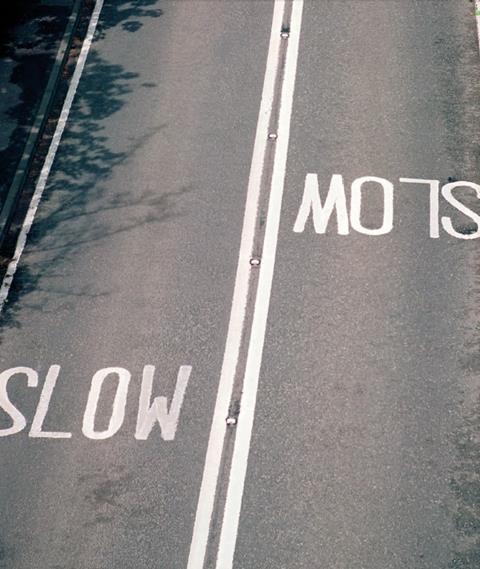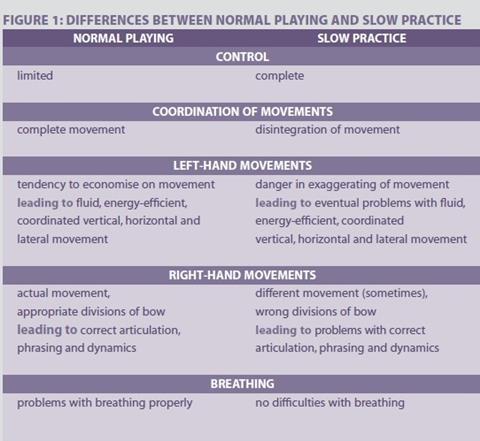Does slow and steady win the race when it comes to practice, or does a more up-tempo approach bring the best results, asks Rok Klopčič

One of the most important considerations in practice is choice of tempo. The importance of slow practising was acknowledged around 1900, perhaps with the advent of Ševčík studies. It immediately suffered the two curses that befall every new precept: those of exaggeration and exclusivity – ‘This is the only right way and all others are bad, if not downright idiotic.’
Teachers with a more or less pronounced streak of sadism have forced students to practise long segments almost exclusively at an extremely slow tempo – the slower, the better. Aside from being extremely tiring such an approach does not bring the desired results. The main reason for this is the fact that very slow practising is different from playing at the normal tempo:

The most appropriate policy is to take a best-fit approach to practising – divide it according to the purpose of the exercise and then assign the most suitable tempo to it. For example, work on intonation, due to the control required, should be attempted in small segments and at a rather slow tempo. This permits careful comparison with open strings and allows the student to seek perfection in double-stops. Analytical practising of small segments should be done at a tempo in which complete control is possible, with the addition of short interludes of faster tempos so that the student can experience and control the appropriate physical movements.
Larger segments, whole movements or the whole work should be practised at a tempo that ideally allows all the positive attributes of slow and normal tempos – maximum control with the right movements. The Russian professor M.M. Beljakov named such a tempo ‘working allegro’. As soon as possible the necessary dynamics and expression should be observed, with special attention given to the right hand.
The palette of different tempos for practising would not be complete without mention of two exercises that can give excellent and permanent results in controlling the security and reliability of rhythm and tempo. Performing ritardando at the end of every bar, with the level of ritardando changed at will, is one. The other is arguably one of the best exercises for developing control – deliberate slowing down in segments chosen at random. Both exercises improve mental command of both hands, strengthening what Galamian calls ‘correlation’ or what some would call ‘will-power’.
Read: 'Never practise for more than five hours per day', says violinist Itzhak Perlman
This article formed part of a larger feature in The Strad's October 2006 issue.








































No comments yet